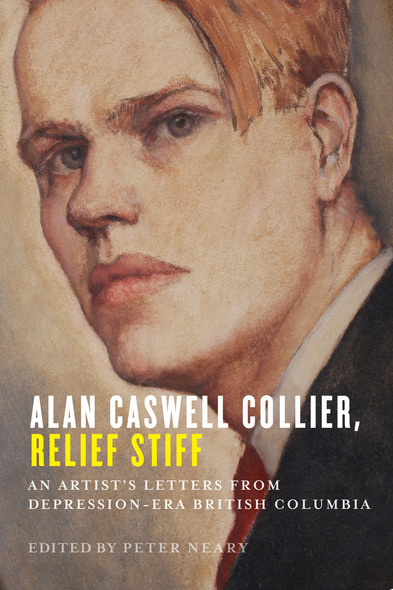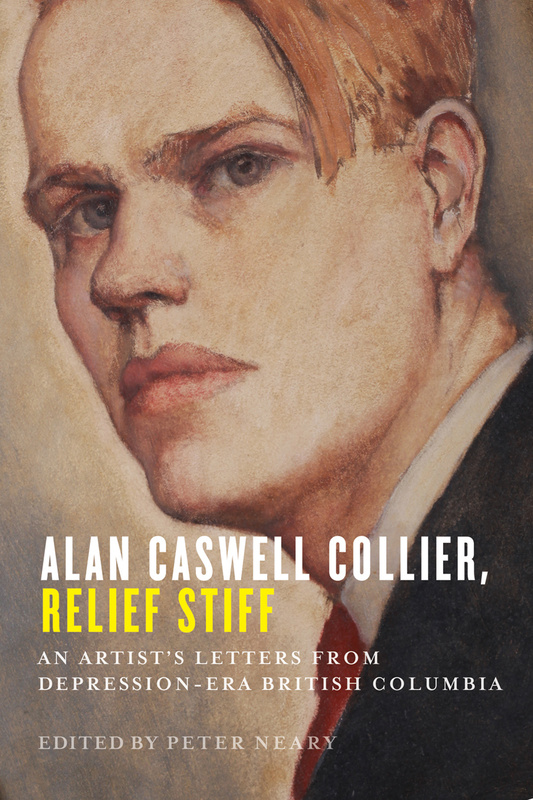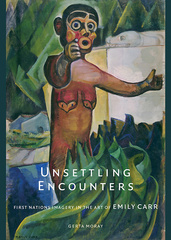
Alan Caswell Collier, Relief Stiff
An Artist’s Letters from Depression-Era British Columbia
In 1934, aspiring Toronto-born artist Alan Collier wrote to his intended from Vancouver, “I have decided that it is impossible for me to get a job … if I can’t get in a relief camp for the winter, I’ll be back to Toronto sometime this fall.”
Alan Caswell Collier (1911–90) went on to become one of Canada’s most successful landscape artists, but during the Depression he joined the thousands of single, unemployed men who rode the rails and hitchhiked across North America in search of jobs. He eventually made his way to British Columbia’s remote government-run relief camps. Labouring for twenty cents a day, he detailed camp life and politics in letters to his fiancée and depicted his fellow “relief stiffs” and the BC landscape in character sketches and paintings.
llustrated with well-known paintings and never-before-published sketches, portraits, and landscapes, Alan Caswell Collier, Relief Stiff captures in vivid detail a world where the Department of National Defence offered youths bed and board, clothes, tobacco, and twenty cents a day but few outlets for their anger and discontent. In the spring of 1935, men from the camps participated in the Communist-led On-to-Ottawa Trek, a defining event in Canadian history. Collier, a born contrarian with a strong sense of social superiority, resisted the mobilization that led to the Trek, but in the 1940s he became a union activist and an ardent social democrat.
Incisive, fresh, and opinionated, Collier’s letters peel back time, opening a window on the feelings and thoughts of an eminent Ontario artist and on a generation who came of age during an era of economic upheaval and class conflict.
This book will appeal to anyone interested in the lives of Canadian artists, the Great Depression, BC history, art history, labour history, or narratives of disaffected youth.
[Collier] was a skilled letter writer and his lively narrative is free of pretension. He attempted to record the toughness of the life in a way that was authentic, while no doubt taking off a few rough edges and embellishing anecdotes, as all writers do … This book is an easy read and will appeal to general readers, as well as those interested in the 1930s life or Canadian art. This fascinating slice of social history forms a Canadian counterpart to the volume of Pollock family letters.
Peter Neary has done a real service by bringing Alan Collier’s letters to a wide public audience. Collier’s views of the politics of the camps, while contentious, provide a useful comparison to the more familiar leftist reading of the era. More importantly, his letters, along with the paintings and photographs that Neary has collected, provide an intimate and detailed glimpse, a view from the inside, of the relief camp system, a short-lived but embryonic experiment in social control during a time of economic crisis.
This is a superbly edited and annotated collection of Alan Collier’s letters as a relief camp ‘stiff’ during the 1930s. Collier, a celebrated postwar Canadian landscape artist, paints an intimate portrait of the routine indignities, loneliness, camaraderie, and conflicts of relief camp life as well as his joy in discovering and sketching the majestic interior landscapes of British Columbia. It is a magnetic read.
This carefully curated selection of letters brings to life the Great Depression through the lens of a single individual – the artist Alan Caswell Collier, a young man caught up in events in British Columbia by chance and by choice. An engaging read that resonates across time, this book offers a first-person account of the traumatic event that was the Great Depression and serves as a cautionary reminder of what might be.
At the height of the Depression and at the start of his artistic career, Collier, one of Canada’s most dedicated landscape painters, worked as a labourer on roads he would later travel to paint. He reflected on his experiences in letters to his fiancée, Ruth. This collection of letters recreates his experiences with the type of engaging warmth that can come only through thoughtful and thorough research.
Peter Neary is a historian and the editor and author of several books, including White Tie and Decorations: Sir John and Lady Hope Simpson in Newfoundland, 1934–1936 and On to Civvy Street: Canada’s Rehabilitation Program for Veterans of the Second World War. He is a professor emeritus of history at the University of Western Ontario.
Preface
Principal Persons
Introduction
2231 Blenheim St., Vancouver
Camp 506, Big Bend Road, Near Revelstoke
Camp 376, Tappen
Camp 378, Notch Hill
2231 Blenheim St., Vancouver
Afterwards …
Appendix; Further Reading; Index







